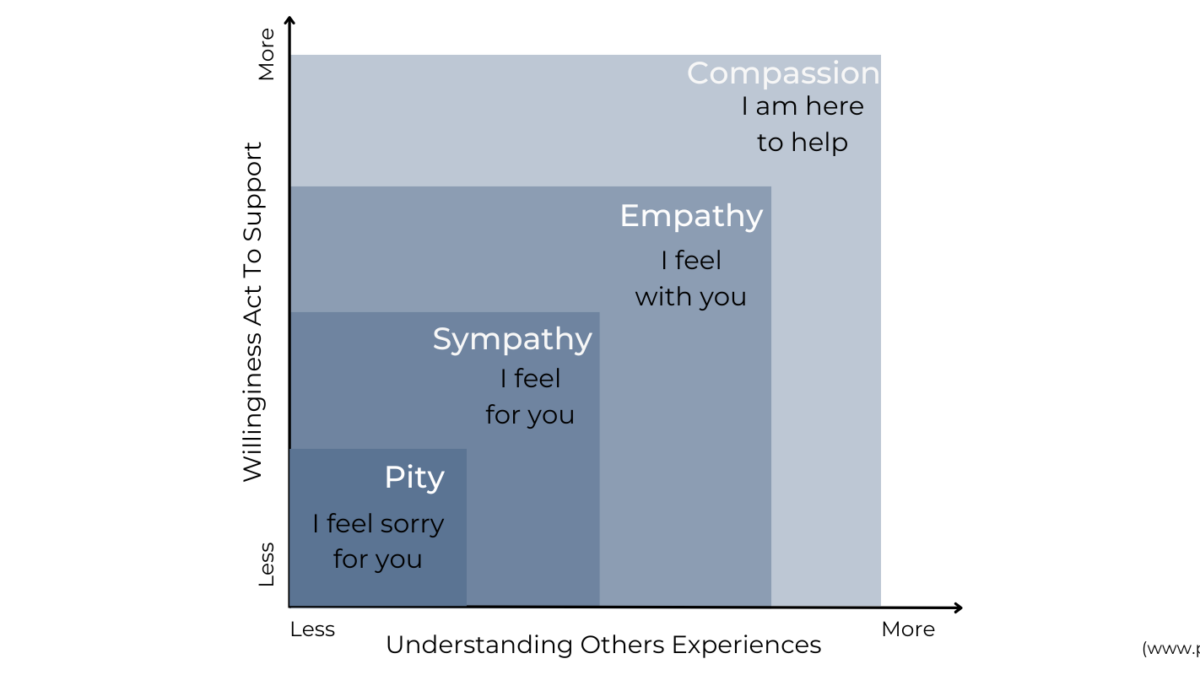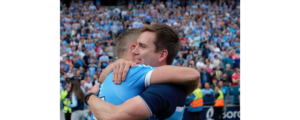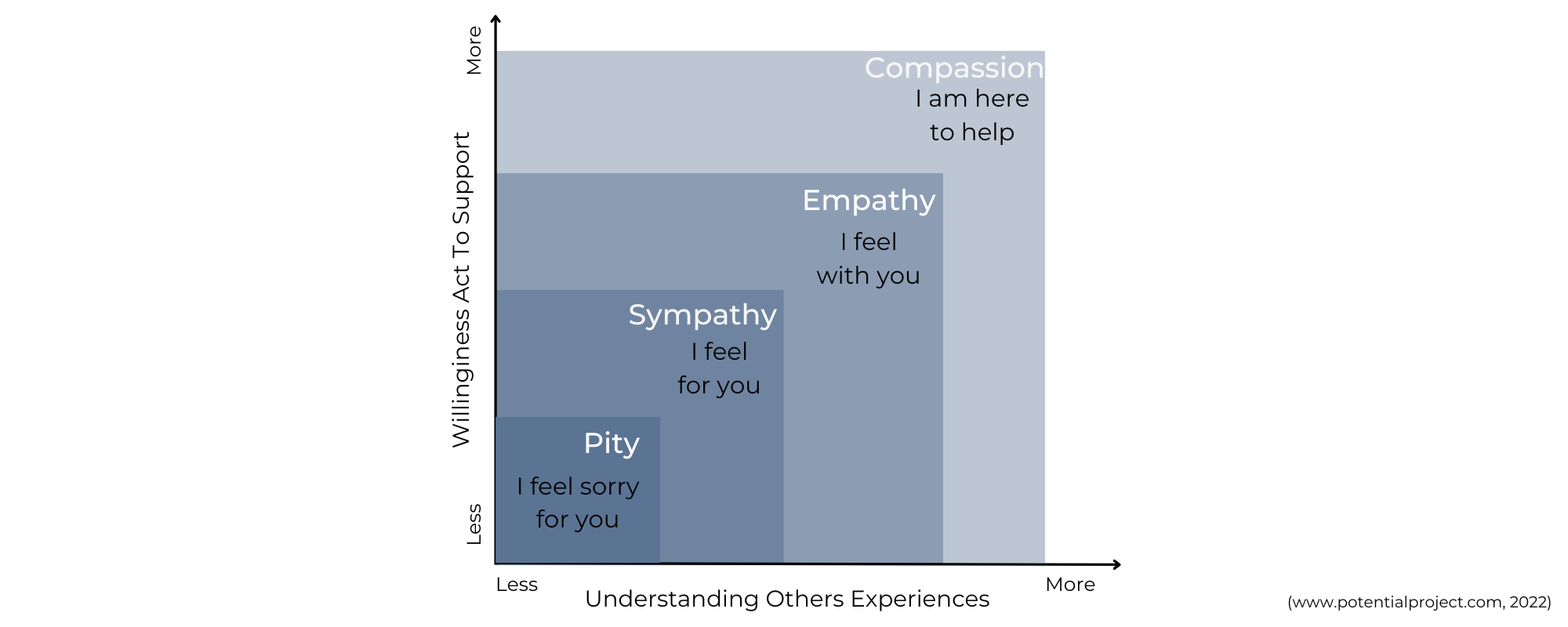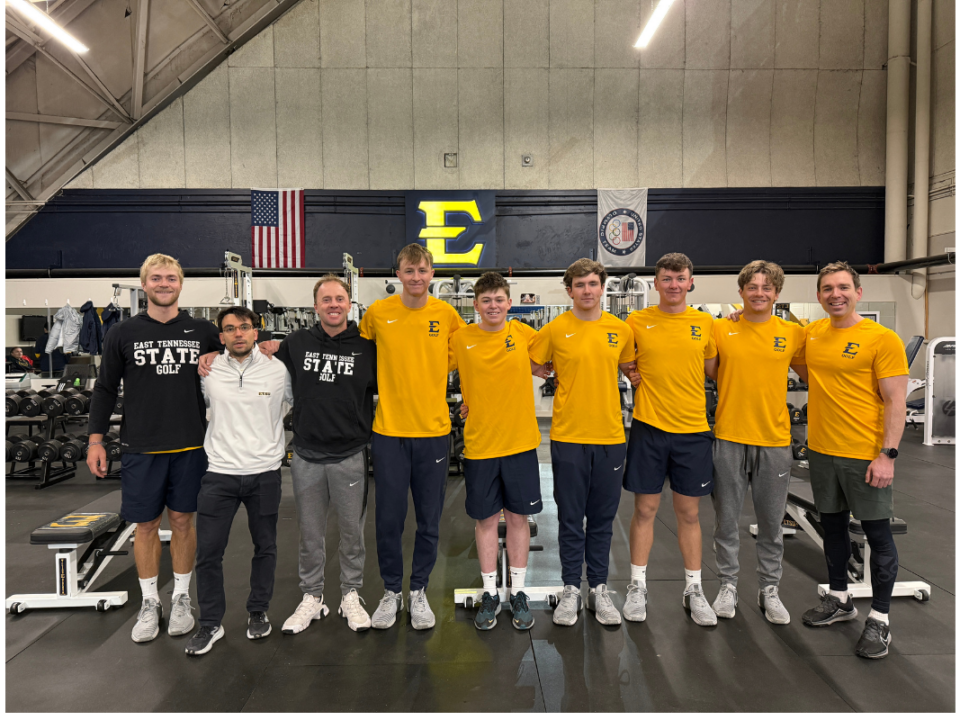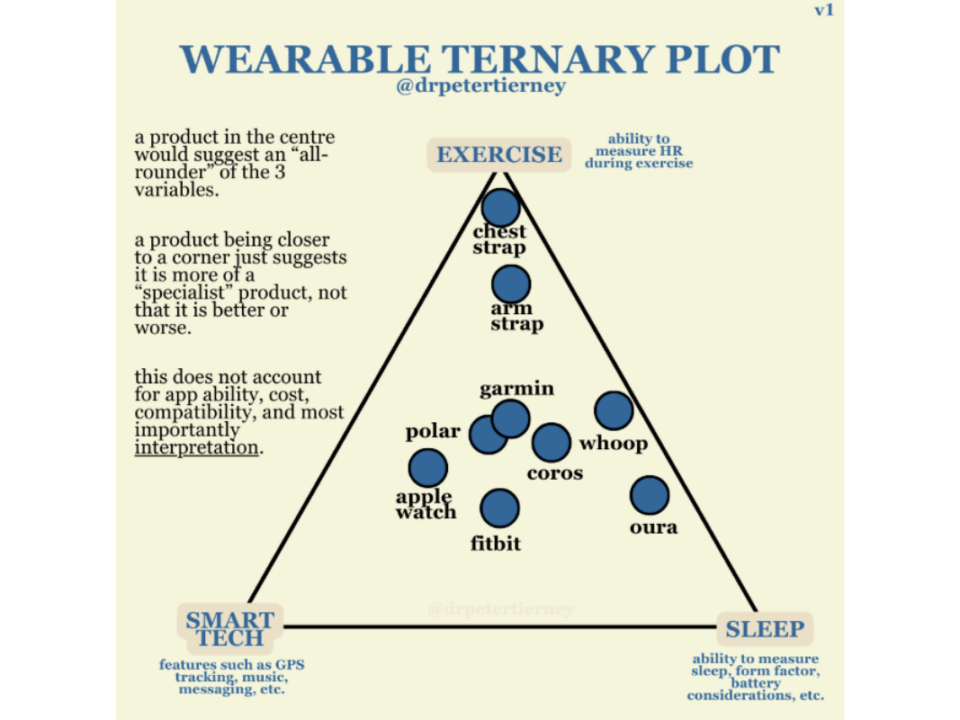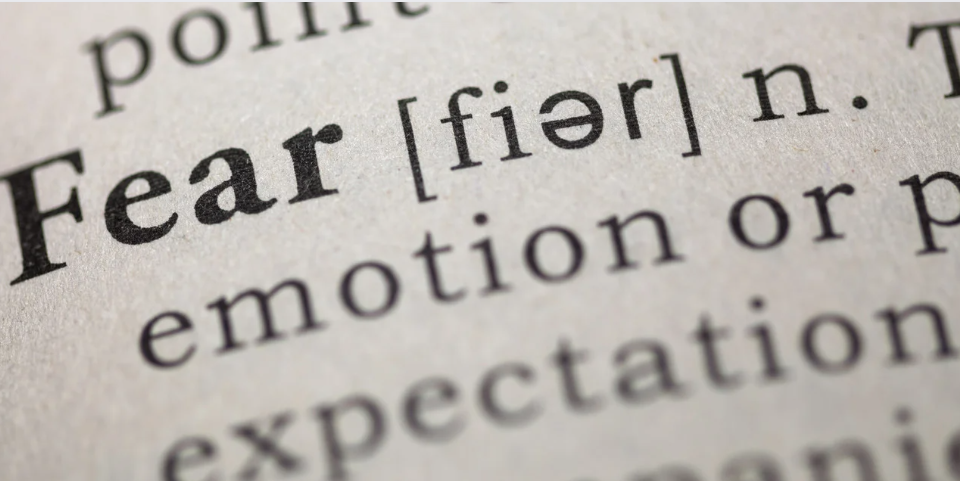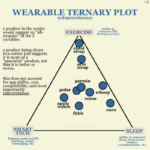
Wearables Part 2 – daveynutrition & Peter Tierney
March 3, 2025
ETSU Winning Moments
March 10, 2025
Wearables Part 2 – daveynutrition & Peter Tierney
March 3, 2025
ETSU Winning Moments
March 10, 2025In sport, as in life, setbacks are inevitable. Losses, injuries, illness, or missed opportunities can feel like the end of the world. The moments where everything falls apart—the ones you can’t control—are the true test of an athlete’s mindset. How do you respond? Do you accept defeat, bounce back immediately, or sit in the depths of frustration and disappointment?
I’ve sat in dressing rooms with athletes who have missed the defining play, suffered a career-threatening injury, or found themselves cut from the squad. In those moments, emotions run deep—tears, pain, embarrassment, guilt, and loneliness. Nothing anyone says can undo what has happened. But what can help is knowing that someone is there, that someone cares.
As Rasmus Hougaard, Jacqueline Carter, and Marissa Afton explain in Connect with Empathy, But Lead with Compassion, there is a critical difference between pity and compassion. Pity acknowledges suffering but offers no real support. Compassion, on the other hand, involves taking action to help someone move forward. True leadership is not about empty reassurances but about showing up in those hardest moments and helping athletes navigate their way forward.

One story stands out. It happened about ten years ago on a cold, icy night during a challenge match, one of the final chances for players to prove themselves at the intercounty level. One player had consistently performed in training but was hampered by injuries that limited his ability to showcase his talent in games. Ten minutes into the game, he tore his hamstring.
No contact, no collision, just him and the injury that threatened to derail his dream. As he walked off, nobody approached him. He disappeared into the dressing room alone. When I followed, I found him sitting there, a towel over his head, silent tears running down his face. In that moment, there were no words to make it better. Telling him it would be okay wasn’t an option because the reality was, if he got dropped, it wasn’t okay.
But I could be there. That’s what mattered. Compassion is about presence, about standing alongside someone in their toughest moment and finding a way forward together. As the HBR article explains, real connection isn’t just about feeling someone’s pain; it’s about leading them through it.
That athlete didn’t let that moment define him. Years later, he became the match-winner in an All-Ireland final. When people ask me about the greatest athletes I’ve worked with, he is the one I think of – not because of what he achieved on the field, but because of how he handled what happened in the shadows away from the pitch and in those hard moments where you can say fuck this.
My Own Experience with Setbacks
To be true to this piece, I have to acknowledge my own experiences with setbacks. While I have suffered major injuries and lost finals, some of the hardest moments for me as a footballer came when we won – yes, won – but I wasn’t a part of it. Judged to not be needed for my team to win, despite dedicating my life to impacting the group.
It can sound selfish, can’t it? It’s about the team, Daniel. It is, until you’re not needed. And then, you have to find another way to come through feeling a little better about your sense of value and manage your emotions. I have often shared that I would feel better when people would know me as the footballer rather than the author, that’s the way the mind works.
Michael Phelps once said, Winning isn’t everything, it’s the only thing. But when winning happens without you, that’s when the real internal battle begins. How do you redefine your purpose? How do you still contribute and find fulfillment? That, perhaps, is one of the hardest lessons sport teaches.
Leading Through Setbacks
Not all athletes respond the same way to setbacks. Some don’t want to talk, some need space, while others find comfort in a strong handshake or a simple hug. That’s the art of coaching – understanding the individual and recognising what they need in that moment. But in my experience, I have never once encountered an athlete who didn’t appreciate the support or acknowledgment of their pain.
Practical leadership in these moments can take many forms:
- A quiet moment sitting beside them in the dressing room, saying nothing but being present.
- A firm handshake or a reassuring pat on the shoulder as a silent message of belief.
- A private conversation later, allowing them to process their emotions before offering guidance.
- Checking in with a simple message in the following days, reinforcing that they are still valued and supported.
It’s easy to celebrate athletes when they are winning, but true leadership happens when things fall apart. It’s in those moments – when a player is at their lowest – that the right response can shape their ability to move forward.
Feeling Invisible: The Challenge of Injury
One of the most difficult aspects of being injured is feeling invisible – feeling like you’re no longer needed by the team. When you’re not contributing on the field, it can be easy to feel like you’re on the outside looking in.
One of the best experiences I had in Leinster Rugby was seeing how injured athletes were integrated into the team. They weren’t just left to recover in isolation, they remained part of team meetings, involved in building game plans, and even given roles in the coaches’ box during games. That level of inclusion gives injured athletes a sense of purpose and connection, reinforcing their value to the group even when they can’t play.
More teams and organizations could learn from this approach. Keeping injured athletes involved isn’t just about helping them; it strengthens the team culture by ensuring that every player feels valued, regardless of their immediate availability.
The Power of Connection
As our world becomes more digital, as athletes are increasingly seen as commodities for entertainment, the human connection behind sport remains the most important thing. The defining moments in an athlete’s journey don’t always happen under stadium lights. They happen in empty dressing rooms, in long nights of self-doubt, and in the quiet conversations that help them believe they can rise again. That’s the real test. And that’s what matters most.
In sport, as in life, setbacks are inevitable. Losses, injuries, illness, or missed opportunities can feel like the end of the world. The moments where everything falls apart—the ones you can’t control—are the true test of an athlete’s mindset. How do you respond? Do you accept defeat, bounce back immediately, or sit in the depths of frustration and disappointment?
I’ve sat in dressing rooms with athletes who have missed the defining play, suffered a career-threatening injury, or found themselves cut from the squad. In those moments, emotions run deep—tears, pain, embarrassment, guilt, and loneliness. Nothing anyone says can undo what has happened. But what can help is knowing that someone is there, that someone cares.
As Rasmus Hougaard, Jacqueline Carter, and Marissa Afton explain in Connect with Empathy, But Lead with Compassion, there is a critical difference between pity and compassion. Pity acknowledges suffering but offers no real support. Compassion, on the other hand, involves taking action to help someone move forward. True leadership is not about empty reassurances but about showing up in those hardest moments and helping athletes navigate their way forward.

One story stands out. It happened about ten years ago on a cold, icy night during a challenge match, one of the final chances for players to prove themselves at the intercounty level. One player had consistently performed in training but was hampered by injuries that limited his ability to showcase his talent in games. Ten minutes into the game, he tore his hamstring.
No contact, no collision, just him and the injury that threatened to derail his dream. As he walked off, nobody approached him. He disappeared into the dressing room alone. When I followed, I found him sitting there, a towel over his head, silent tears running down his face. In that moment, there were no words to make it better. Telling him it would be okay wasn’t an option because the reality was, if he got dropped, it wasn’t okay.
But I could be there. That’s what mattered. Compassion is about presence, about standing alongside someone in their toughest moment and finding a way forward together. As the HBR article explains, real connection isn’t just about feeling someone’s pain; it’s about leading them through it.
That athlete didn’t let that moment define him. Years later, he became the match-winner in an All-Ireland final. When people ask me about the greatest athletes I’ve worked with, he is the one I think of – not because of what he achieved on the field, but because of how he handled what happened in the shadows away from the pitch and in those hard moments where you can say fuck this.
My Own Experience with Setbacks
To be true to this piece, I have to acknowledge my own experiences with setbacks. While I have suffered major injuries and lost finals, some of the hardest moments for me as a footballer came when we won – yes, won – but I wasn’t a part of it. Judged to not be needed for my team to win, despite dedicating my life to impacting the group.
It can sound selfish, can’t it? It’s about the team, Daniel. It is, until you’re not needed. And then, you have to find another way to come through feeling a little better about your sense of value and manage your emotions. I have often shared that I would feel better when people would know me as the footballer rather than the author, that’s the way the mind works.
Michael Phelps once said, Winning isn’t everything, it’s the only thing. But when winning happens without you, that’s when the real internal battle begins. How do you redefine your purpose? How do you still contribute and find fulfillment? That, perhaps, is one of the hardest lessons sport teaches.
Leading Through Setbacks
Not all athletes respond the same way to setbacks. Some don’t want to talk, some need space, while others find comfort in a strong handshake or a simple hug. That’s the art of coaching – understanding the individual and recognising what they need in that moment. But in my experience, I have never once encountered an athlete who didn’t appreciate the support or acknowledgment of their pain.
Practical leadership in these moments can take many forms:
- A quiet moment sitting beside them in the dressing room, saying nothing but being present.
- A firm handshake or a reassuring pat on the shoulder as a silent message of belief.
- A private conversation later, allowing them to process their emotions before offering guidance.
- Checking in with a simple message in the following days, reinforcing that they are still valued and supported.
It’s easy to celebrate athletes when they are winning, but true leadership happens when things fall apart. It’s in those moments – when a player is at their lowest – that the right response can shape their ability to move forward.
Feeling Invisible: The Challenge of Injury
One of the most difficult aspects of being injured is feeling invisible – feeling like you’re no longer needed by the team. When you’re not contributing on the field, it can be easy to feel like you’re on the outside looking in.
One of the best experiences I had in Leinster Rugby was seeing how injured athletes were integrated into the team. They weren’t just left to recover in isolation, they remained part of team meetings, involved in building game plans, and even given roles in the coaches’ box during games. That level of inclusion gives injured athletes a sense of purpose and connection, reinforcing their value to the group even when they can’t play.
More teams and organizations could learn from this approach. Keeping injured athletes involved isn’t just about helping them; it strengthens the team culture by ensuring that every player feels valued, regardless of their immediate availability.
The Power of Connection
As our world becomes more digital, as athletes are increasingly seen as commodities for entertainment, the human connection behind sport remains the most important thing. The defining moments in an athlete’s journey don’t always happen under stadium lights. They happen in empty dressing rooms, in long nights of self-doubt, and in the quiet conversations that help them believe they can rise again. That’s the real test. And that’s what matters most.
Upgrade NOW
Upgrade NOW


